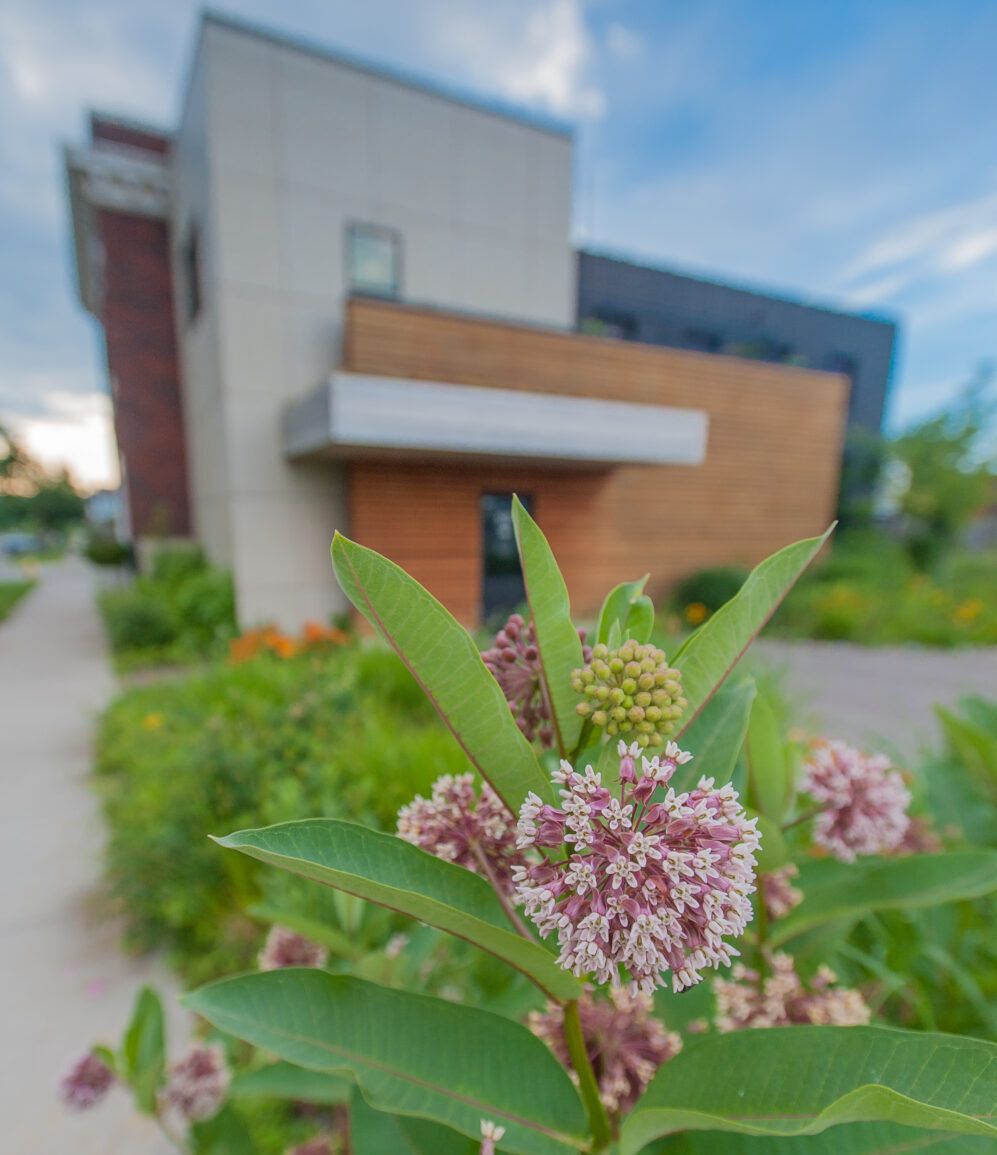Catalyst Partners HQ + M-Retail, LEED Double Platinum
Project Details
Location
502 Second Street
Grand Rapids, Michigan, USA
Services Utilized
Green Building Certification Sustainability Consulting
Building Performance
Healthy Building Consulting
Project Achievements
Best New Building Award 2012
Most Sustainable New Building 2012
Green Office Building Award Building Award for Outstanding Sustainable Design
Project Size
4,000 Square Feet
The Challenge
502 Second St., on Grand Rapids’ Westside, was built in 1917 as the offices for the Waterson Higgins Milling Company. In 2010, Catalyst Partners, in partnership with M. Retail Solutions, undertook this full renovation with the goal of achieving the highest possible rating, LEED Platinum, under U.S. Green Building Councils (USGBC) LEED for New Construction.
This location would serve as the headquarters and incubation space for Catalyst Partners. To achieve the goal of Platinum certification, the building would need to excel in all of its objectives including location and transportation, sustainable sites, water efficiency, energy and atmosphere, materials and resources, indoor environmental quality, and innovation.
“502 Second Street continues to serve as our incubator for ideas and experimentation and continues to expand our learning curve,” says Keith Winn, president, Catalyst Partners. “We learn from everything we do here—it’s a physical manifestation of what works, what doesn’t work, and what the challenges are.”
After receiving the LEED Platinum Award in 2012, the team did not stop improving the space with continual improvement made to ensure that the building would remain a space for innovation into the future.
Century old building
makes green history
502 Second Street continues to serve as our incubator for ideas and experimentation and continues to expand our learning curve. We learn from everything we do here—it’s a physical manifestation of what works, what doesn’t work, and what the challenges are.
Our Solution
“We ultimately want our building at 502 Second Street to inspire and encourage our clients to apply what we have learned to their own projects and experience.”
— Keith Winn
Bringing a century-old building up to 21st-century LEED standards presented many challenges. Even so, while preserving 98 percent of the existing structure, that renovation resulted in the building using 55 percent less energy than a typical office building and 40 percent less water than the national baseline, while generating zero stormwater discharge. The project met a myriad of other LEED Platinum standards, as well.
In 2017, as the Catalyst Partners team made the space their work home over the next six years, they considered how to further improve its efficiency and comfort metrics—and sought two additional designations: LEED Existing Buildings: Operations & Maintenance v. 4 (LEED-EBOM) and Consumers Energy Zero Net Energy (ZNE).
In the Fall of 2017, Catalyst Partners signed on with the new Consumers Energy ZNE Pilot Program, which aligned with their goal to consume less energy than they produced. After creating an early stage “White Box” energy model, they began testing and evaluating various Energy Conservation Measures (ECMs). These energy simulations would prove to be critical as the team sought to thoroughly understand how to best implement various changes throughout the entire process. At their first ZNE Workshop, they reviewed the first energy simulation’s results by (1) reviewing the building’s current Energy Use Intensity (EUI) and (2) defining and establishing aggressive target metrics to achieve the program’s ZNE goal.
In 2019, the LEED-EBOM Platinum certified project earned awards from both the U.S. Green Building Council of West Michigan, “Green Office Building Award,” and the U.S. Green Building Council – Detroit Region, “Building Award for Outstanding Sustainable Design.”
“We ultimately want our building at 502 Second Street to inspire and encourage our clients to apply what we have learned to their own projects and experience,” Winn says.
Well before the year 2030, Catalyst Partners expects the building to be energy positive, i.e., produce more energy than it uses. This goal aligns with the USGBC’s new LEED Positive vision to transition from strategies that reduce the harm done by buildings to strategies that cause no harm and begin the process of healing and repair.
Using its own building as a learning lab allows Catalyst Partners to illustrate the comprehensive approach the team takes on each client’s and every project’s specific needs. This approach goes well beyond considering energy, water, and waste to encompass health and wellbeing, transportation, materials, and impacts on the natural environment—including native plant and animal life.
“We have a comprehensive approach, not just energy-centric. We don’t make assumptions. Even if a project is only pursuing LEED, it is a very broad certification. You can apply what we learn to your own projects and experience,” Winn says. “When we start to finetune your specific project, we enable you to get the return on investment that you are looking for, to not only improve the performance of your building, but to improve the performance of your business.”
Projected Achievements
100%
Site Stormwater Capture + Treatment
99%
Existing Building Reuse
43%
Calculated Water Use Reduction
57%
Energy Cost Reduction
100%
On-Site and Off-Site Renewable Energy Systems (Compared to Actual Usage)
93
ENERGY STAR Rating

